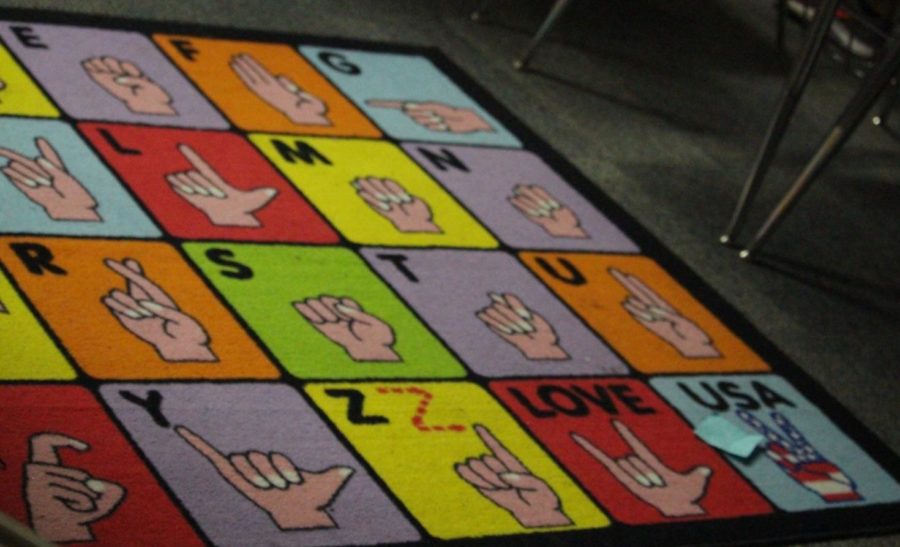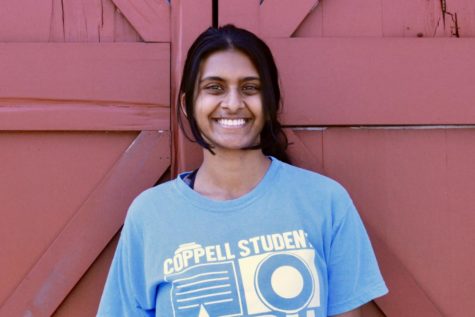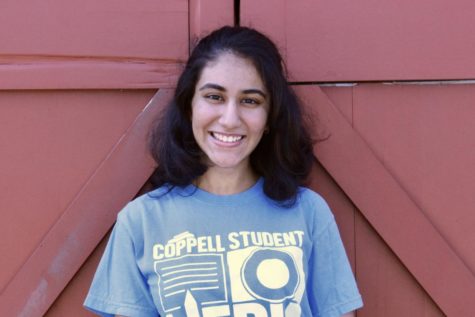Strengthening hands, knowledge through sign language
The alphabet and the phrases “love” and “USA” in American Sign Language (ASL) are displayed on a carpet in CHS ASL teacher Delosha Payne’s classroom. The ASL alphabet is the basis of the language.
September 8, 2018
Last December, I met my first Deaf* friend, The Sidekick editorial page editor Claire Clements. When she first explained she was deaf, I immediately said, “That’s so cool!”
Everyone laughed, and she said that was the first time she had heard that response. For years, I have been in love with Deaf culture. This summer, I used that love to begin self-learning American Sign Language (ASL).
My interest was sparked by Freeform’s “Switched at Birth”, a TV drama featuring many deaf characters. The various cultural aspects of deafness in the show intrigued me — the Deaf school, the lip reading, the references to Gallaudet’s historical Deaf protest and of course, the language.
At first, I was not sure of the most effective way of learning. I tried several different apps and free online courses, and finally settled on lifeprint.com, since it is the same one used by Coppell High School’s ASL classes. Now, I am over halfway through the ASL I course.
Immersing yourself in a multitude of cultures is important because it helps you deeply appreciate others’ beliefs and helps you understand why people are the way they are. Learning the language is a step of that immersion.
“If you’re able to learn the language, then I think that’s a personal way for you to show someone ‘Hey, I’m interested in you, I’m interested in your culture, I’m interested in something that makes you who you are,’” Coppell High School ASL teacher Delosha Payne said.
Educating yourself about Deaf culture is valuable because rids you of the misconceptions society has about deaf people. Also, since so many deaf people have been mistreated by hearing people sometime in their life, it is important they receive support from anyone they possibly can.
“I like teaching ASL because I get to teach kids that being deaf doesn’t make you handicapped, it just means you communicate differently, and with that I can also teach that being different doesn’t make anybody lesser than someone else,” Payne said.
Often, when Clements is helping me practice signs , I receive several stares from strangers. This may happen when you communicate through any foreign language in a public space, but ASL is a particularly strong victim of judgment because of how different and noticeable it is.
ASL is a powerful language, as so much can be conveyed simply by the expression on one’s face. For me, facial expressions are the hardest aspect of the language, but teaching myself to sign has forced me to be more expressive. Furthermore, the act of signing is very empowering. Whenever I sign crisply and accurately, I feel strong and satisfied.
You can practice signing anywhere, which I love. When you are in the car, look out the window and finger-spell the names of objects you see. When you are talking to your friends, sign the ASL words that go along with the English you are speaking.
It is fascinating when two people introduce themselves as being part of the Deaf community, as they become instant friends. The community is not exclusive to deaf people, as those with Deaf friends and family often consider themselves part of it as well.
“You just have to be someone that’s interested in the interests of the Deaf community,” Payne said. “You have to be willing to partake in the language, partake in hanging out with Deaf people, and being an advocate for people that are deaf.”
*Deaf is capitalized because Deaf represents the culture of the Deaf community, whereas deaf in lowercase represents the medical loss of hearing.












April Clements • Sep 9, 2018 at 1:51 pm
Beautifully written, Pramika! Thank you for making people more aware of Deaf culture and your willingness to learn ASL.
Pramika S. Kadari • Sep 11, 2018 at 5:07 pm
Thank you!